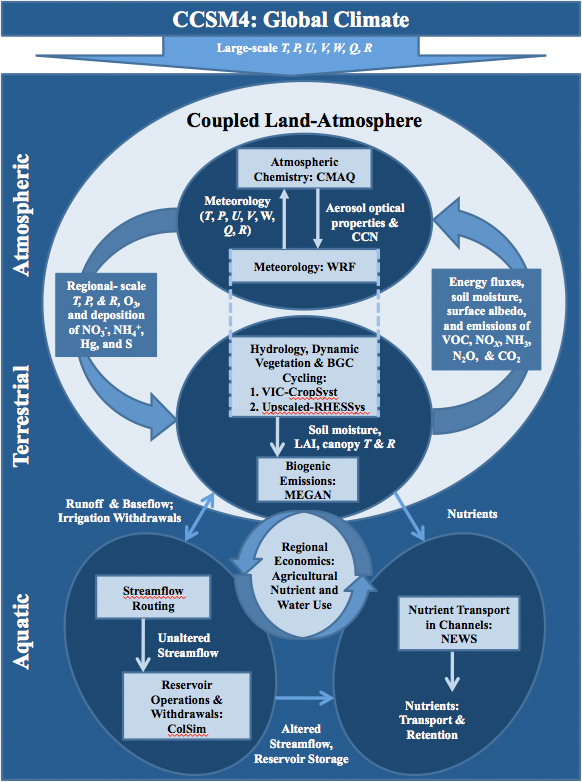BioEarth Modeling Framework OverviewThe challenge of the BioEarth project is to develop a framework that can be used to understand and quantify the interactions between N, C, and H2O dynamics, including their responses to changes in climatic characteristics, the socioeconomic environment, and resource management activities at spatio-temporal scales relevant for decision-making.An integrated system is necessary to comprehensively capture the impacts of a change, thereby uncovering nonlinear behavior, activation thresholds, and unanticipated responses and feedbacks. The model is developed via integration of existing model components; by choosing among the most sophisticated models, the integrated modeling framework will continually improve as each component develops. Each of the stand-alone models within the framework is an open-source community model in continuous development, allowing the BioEarth framework to benefit from the model development efforts of the larger scientific community. This framework encompasses atmospheric, terrestrial, aquatic, and economic model components with varying levels of integration (Figure 1). Regional economic analysis links the terrestrial and aquatic components; the circular arrows in Figure 1 represent coupled human and natural system feedbacks. Exogenous to the BioEarth framework are water regulatory institutions and other environmental policies, the environmental and economic impacts and trade-offs of which can be quantified.
Figure 1. Linkages between the atmospheric, terrestrial, aquatic, and economic components that comprise the BioEarth model. Detailed here are some of the variables that are passed between stand-alone models: T=temperature, P=precipitation, U,V,W=wind speed components in three dimensions, Q=water mixing ratio, R=radiation, CCN=cloud condensation nuclei, O3=ozone, NO3-=nitrate, NH4+=ammonium, Hg=mercury, S=sulfur, VOC=volatile organic compounds, NOx=NO + NO2=nitric oxide + nitrogen dioxide, NH3=ammonia, N2O=nitrous oxide, CO2=carbon dioxide, LAI=leaf area index. |


